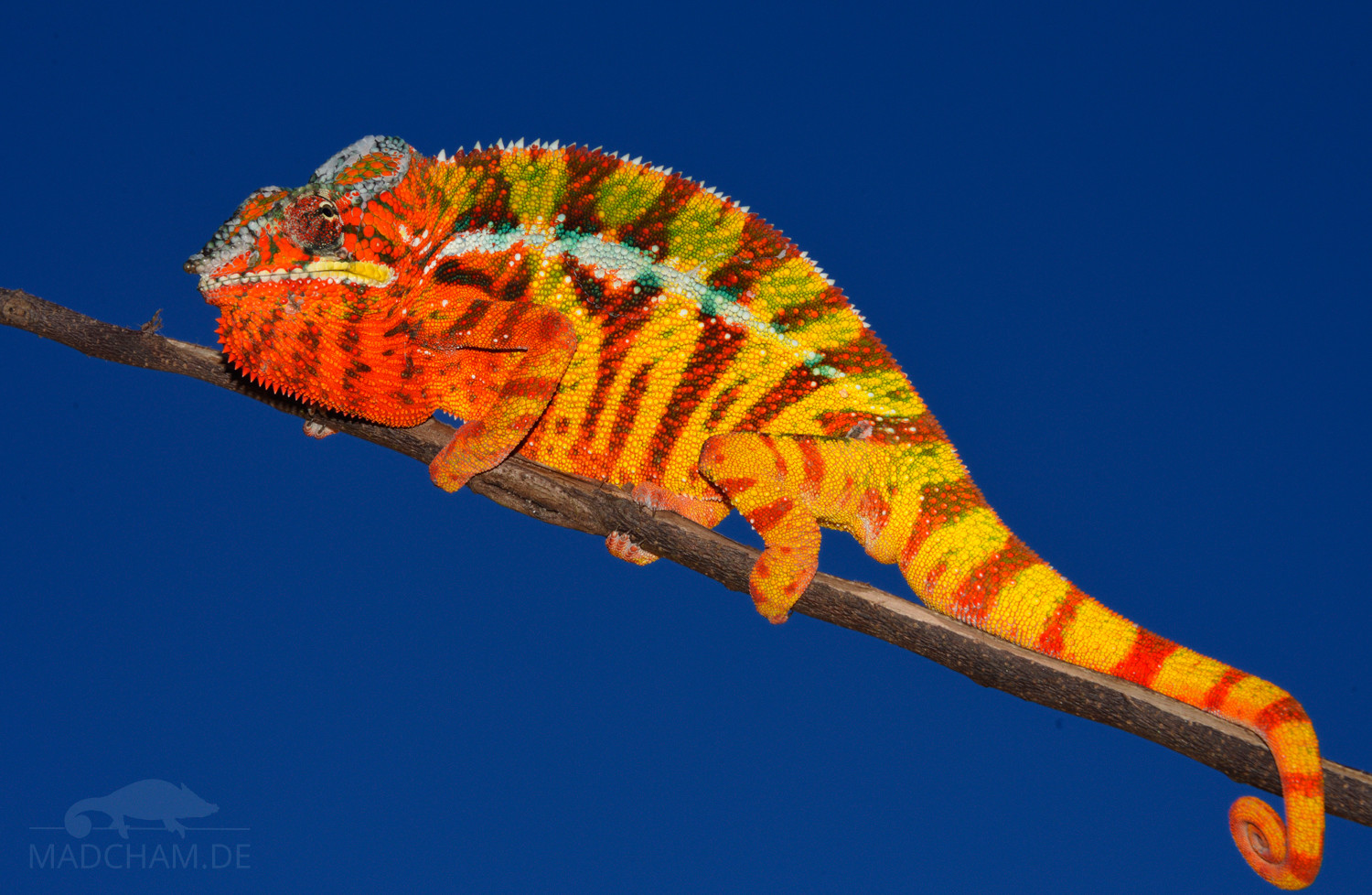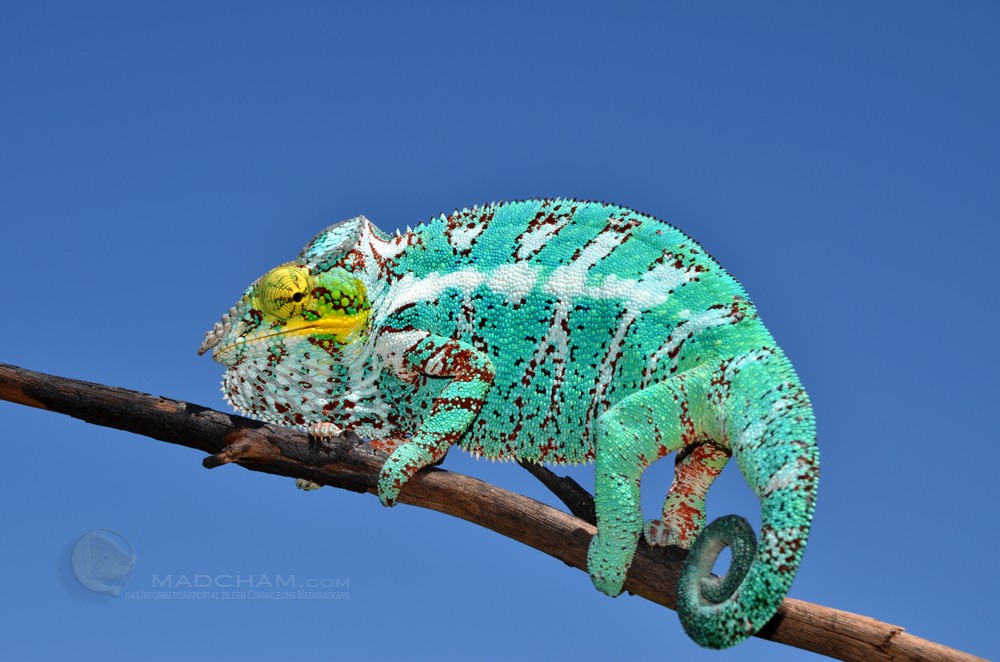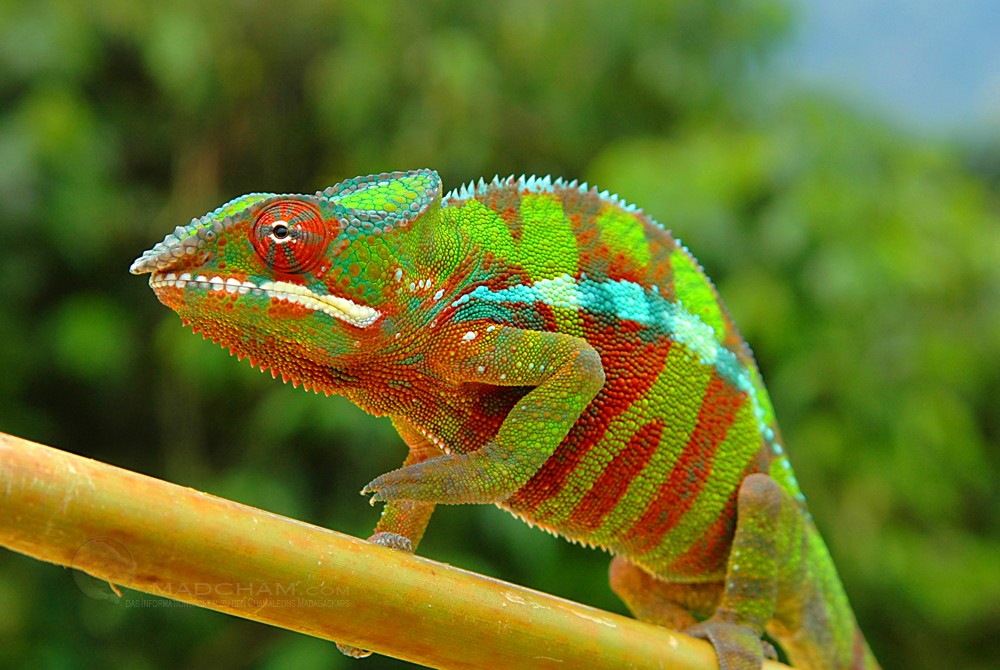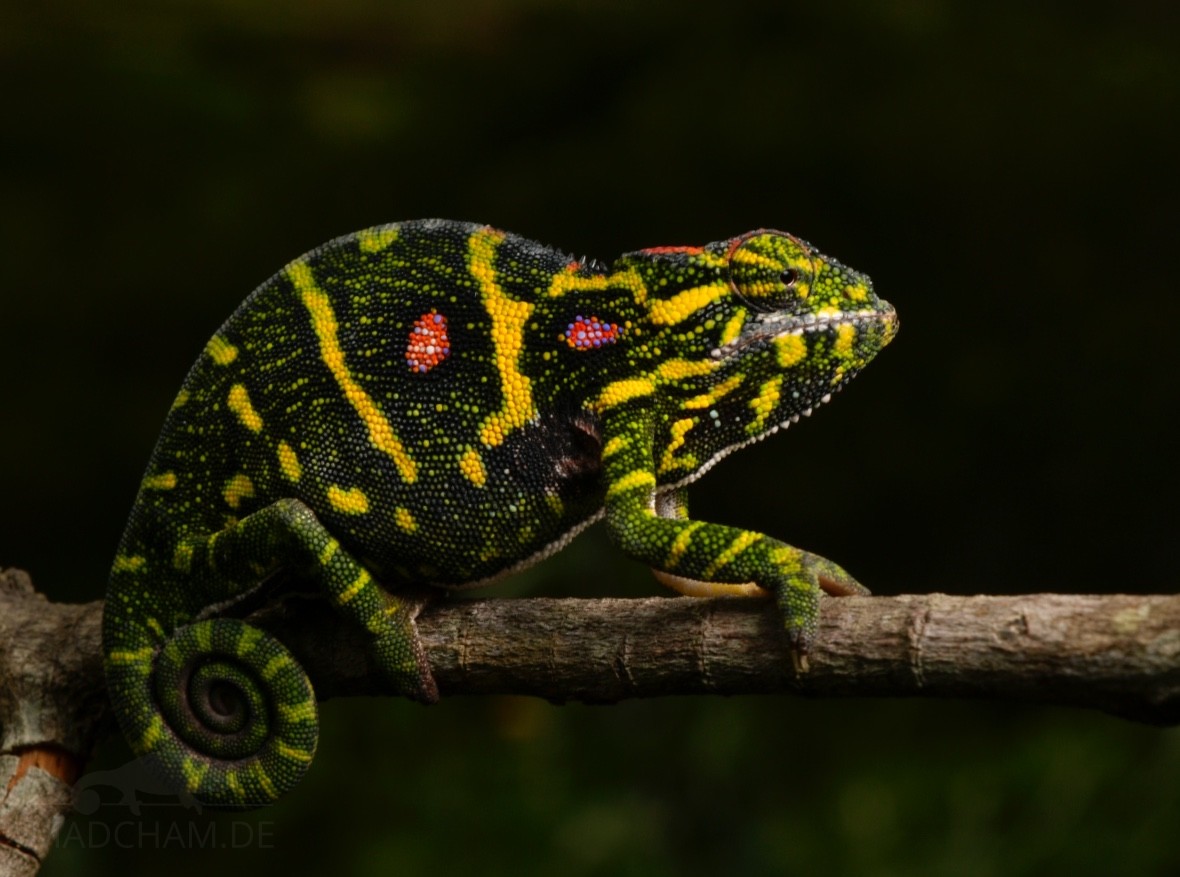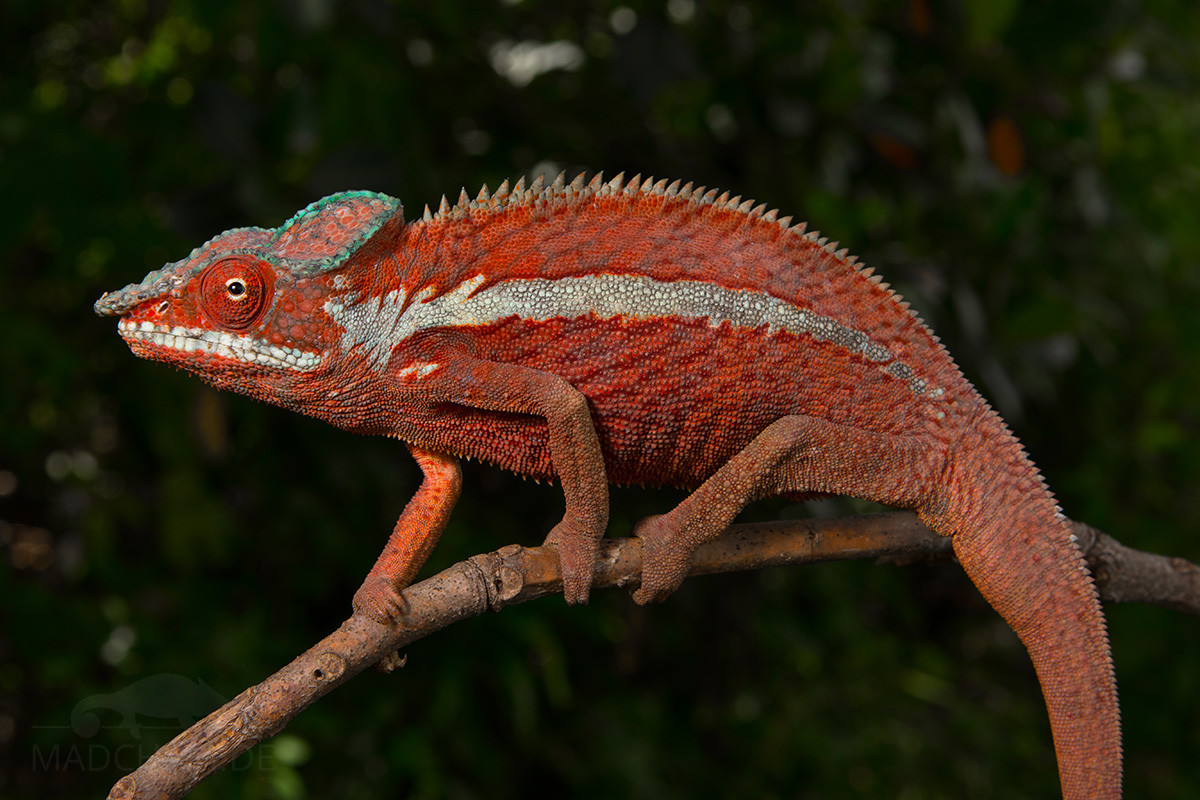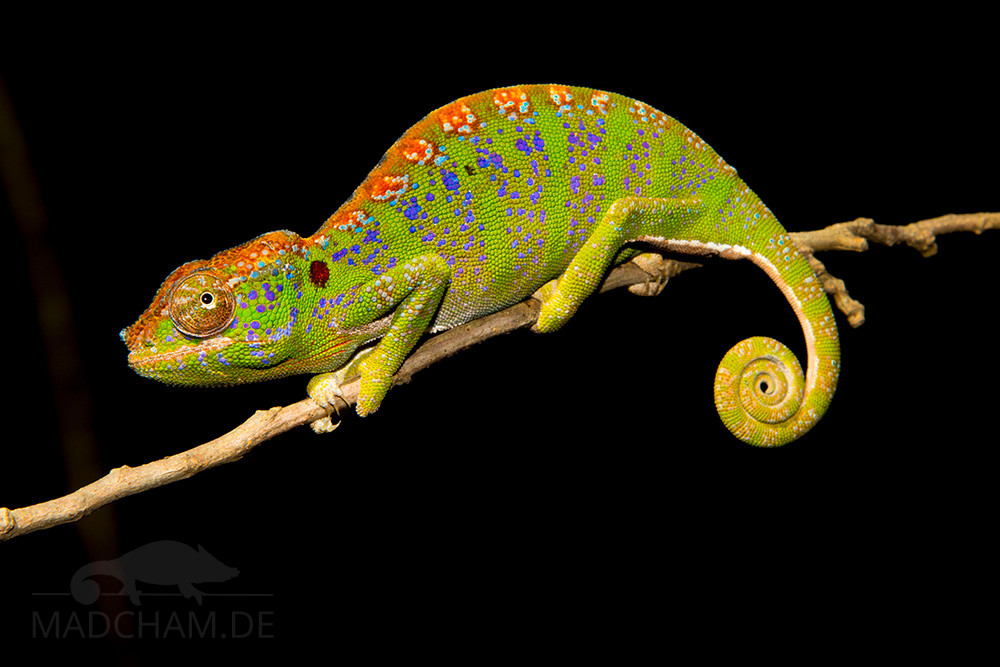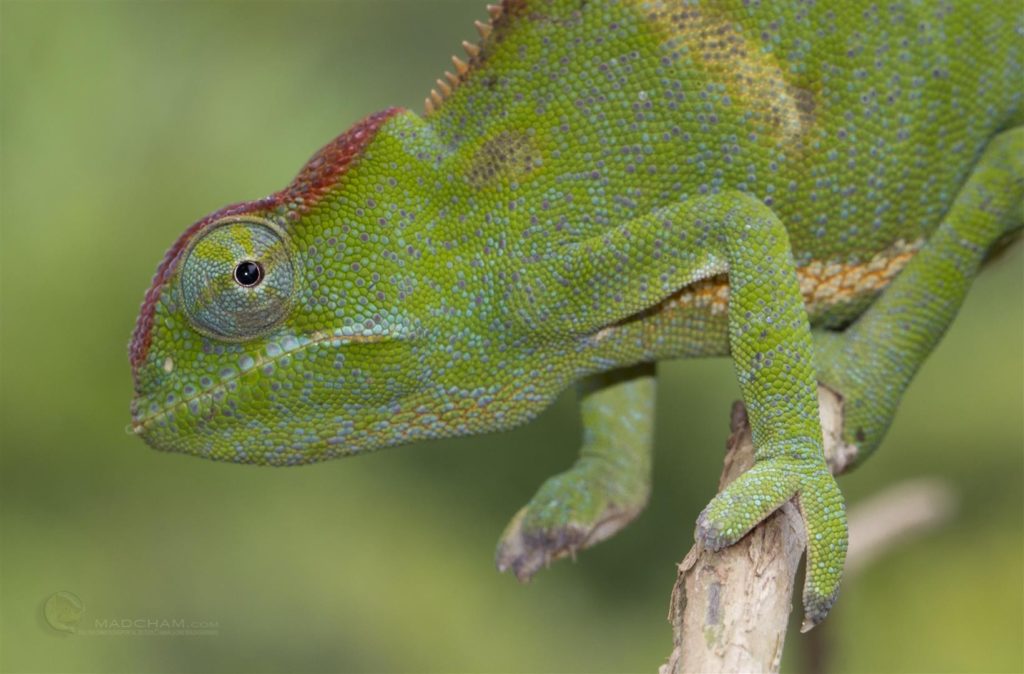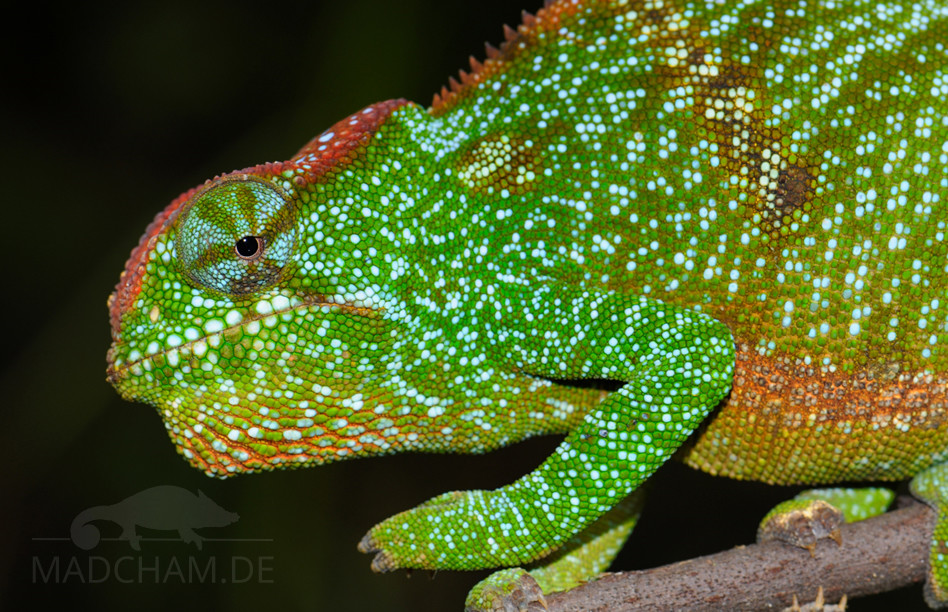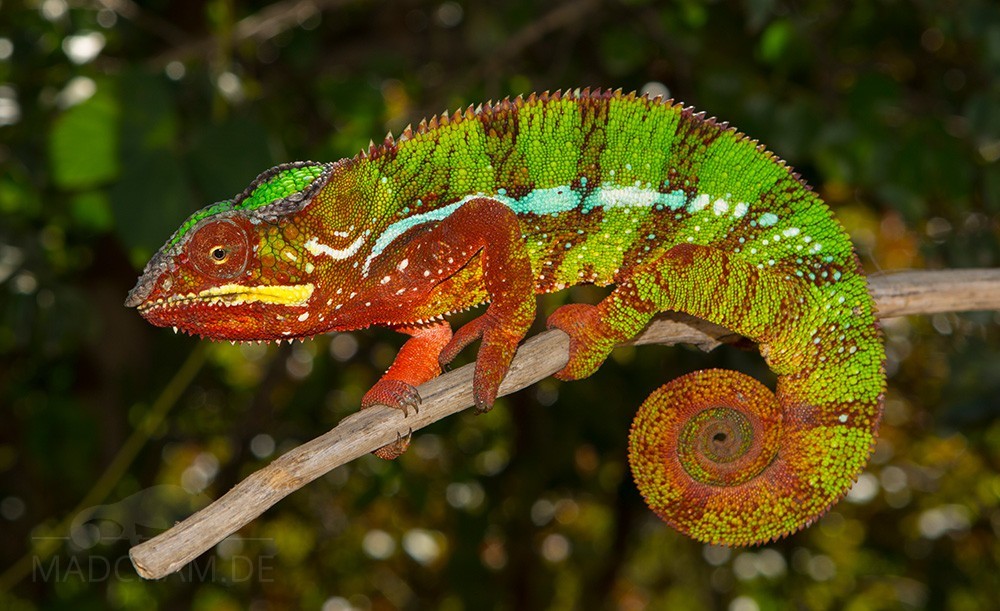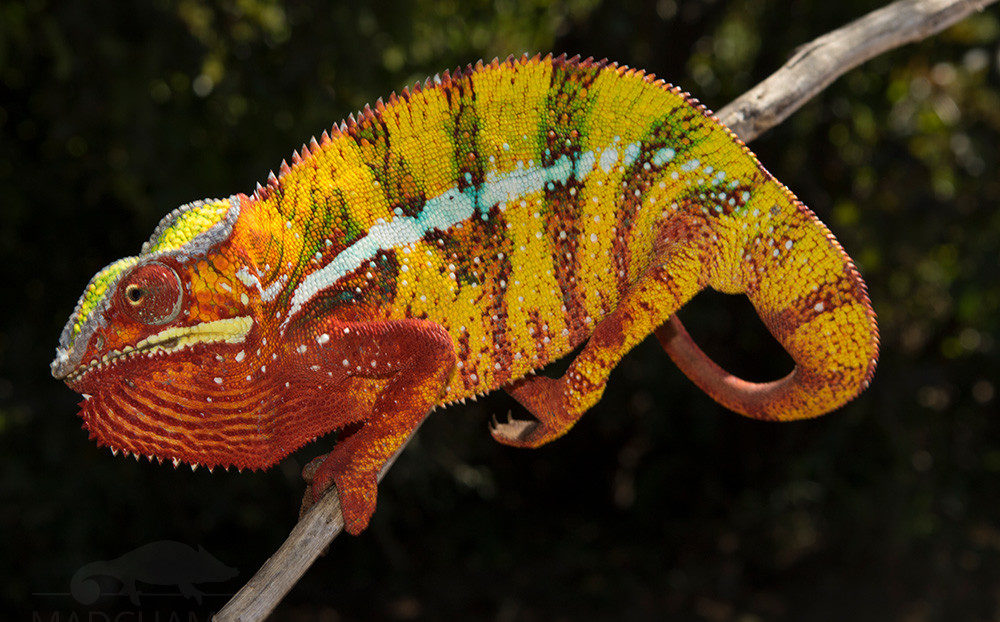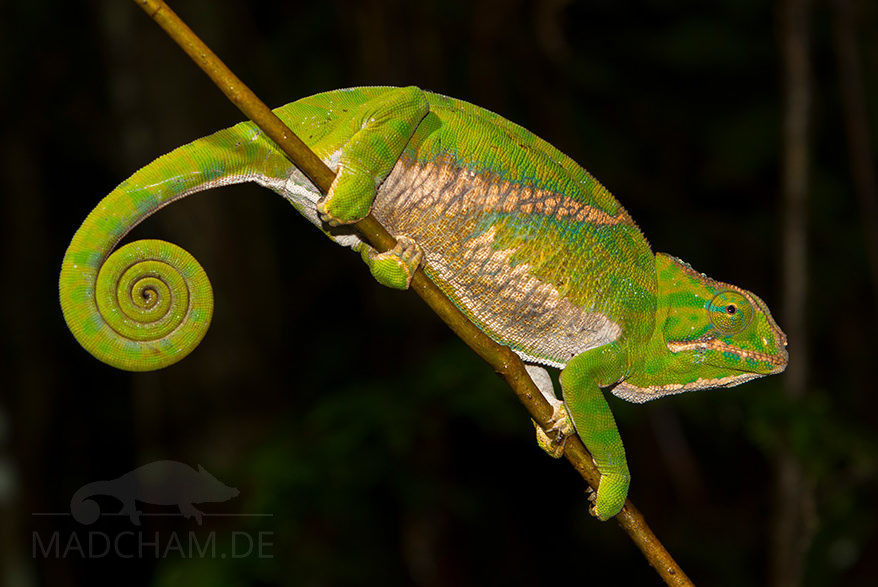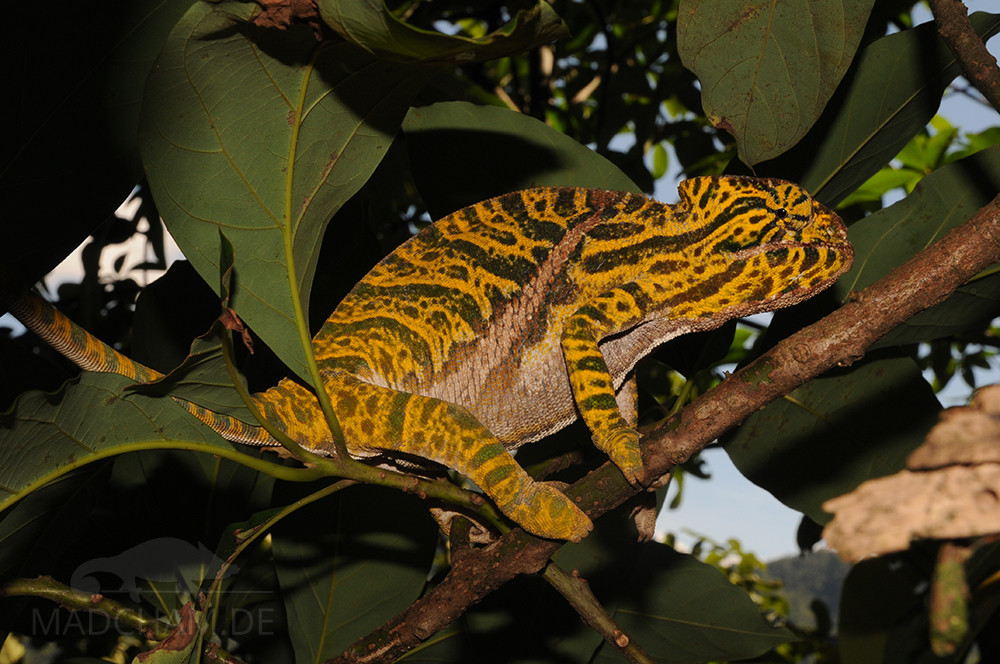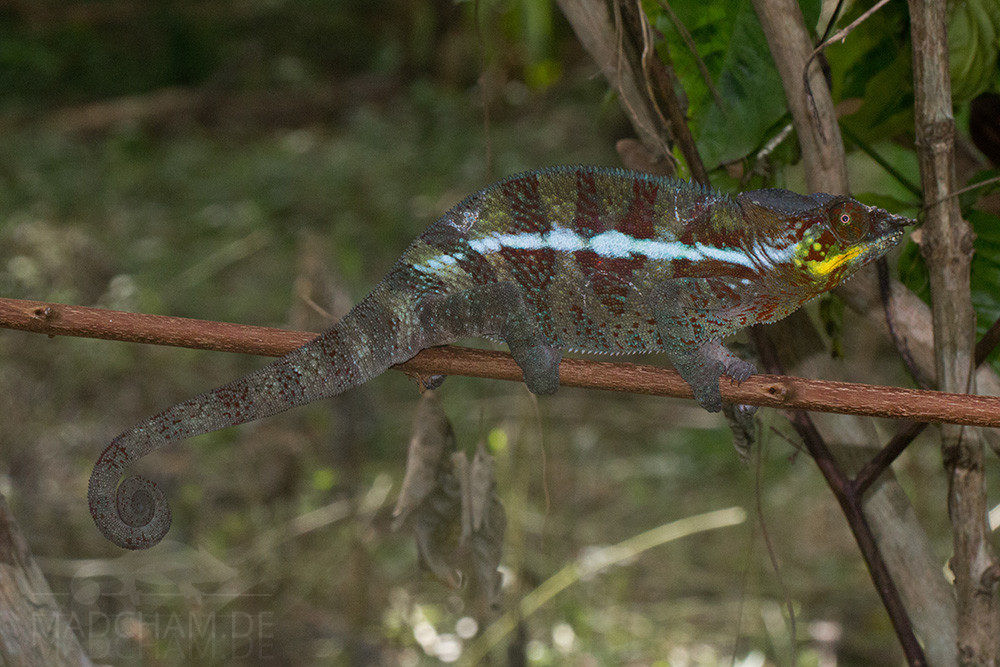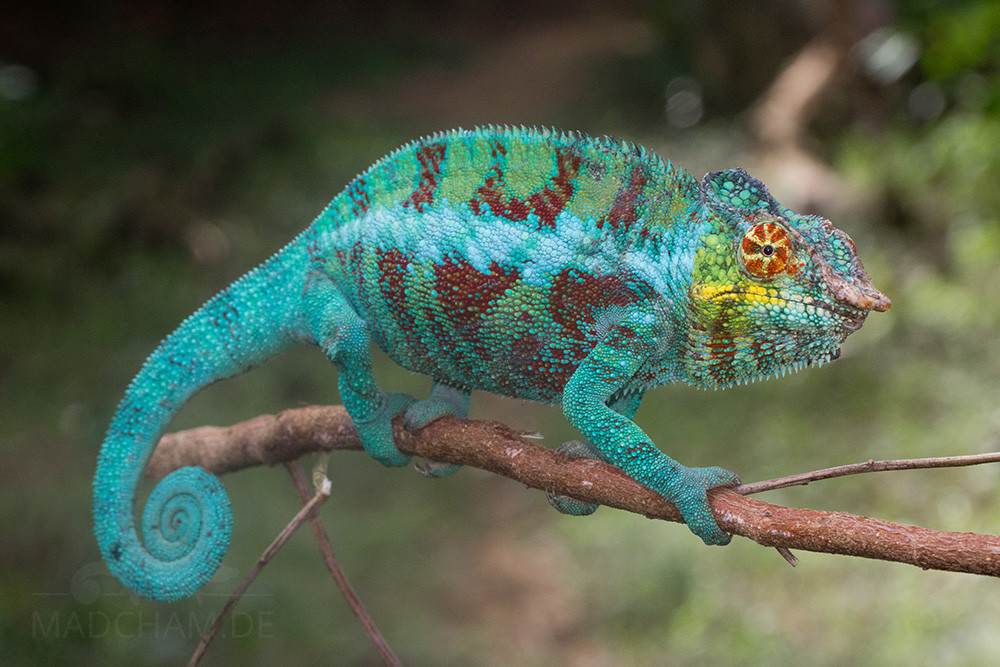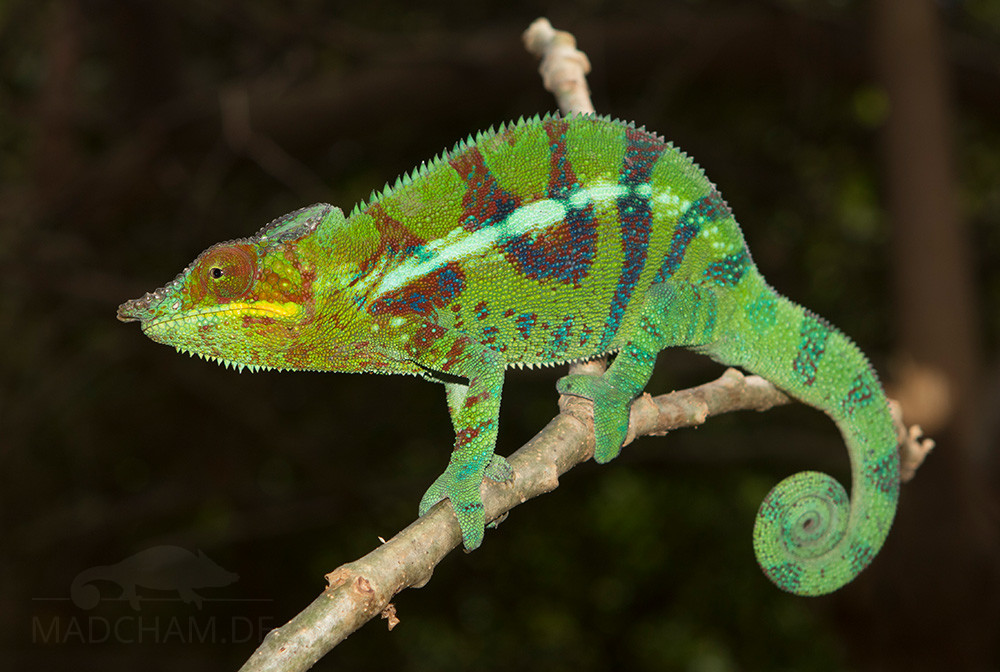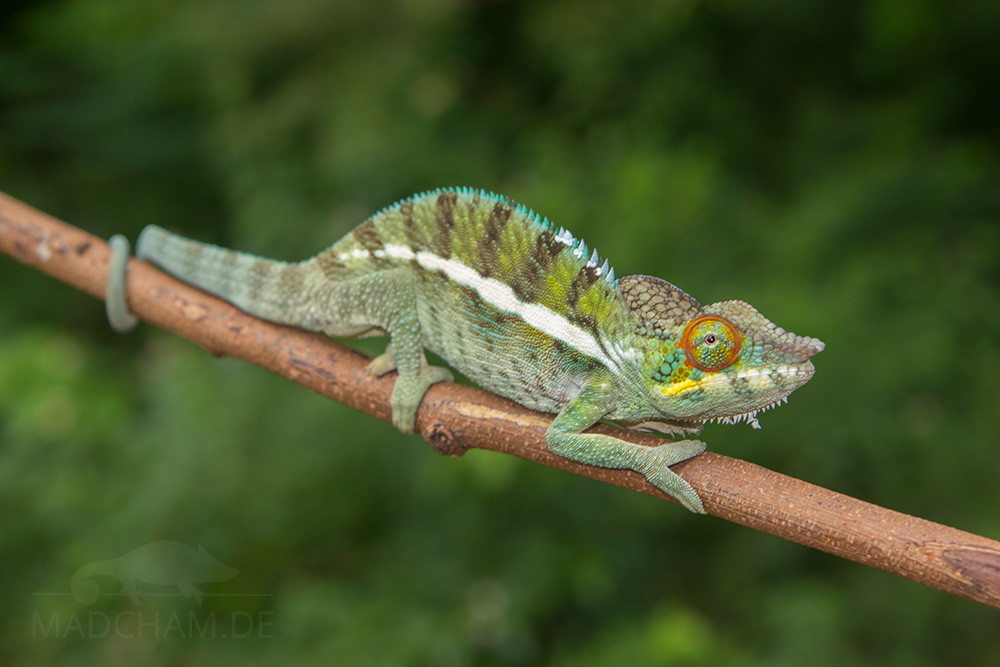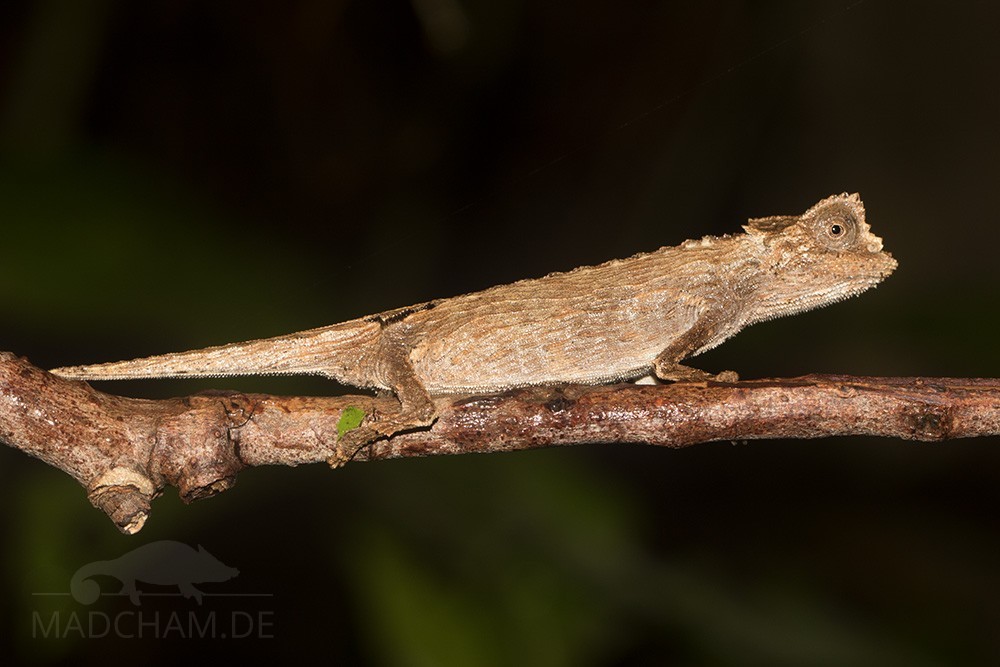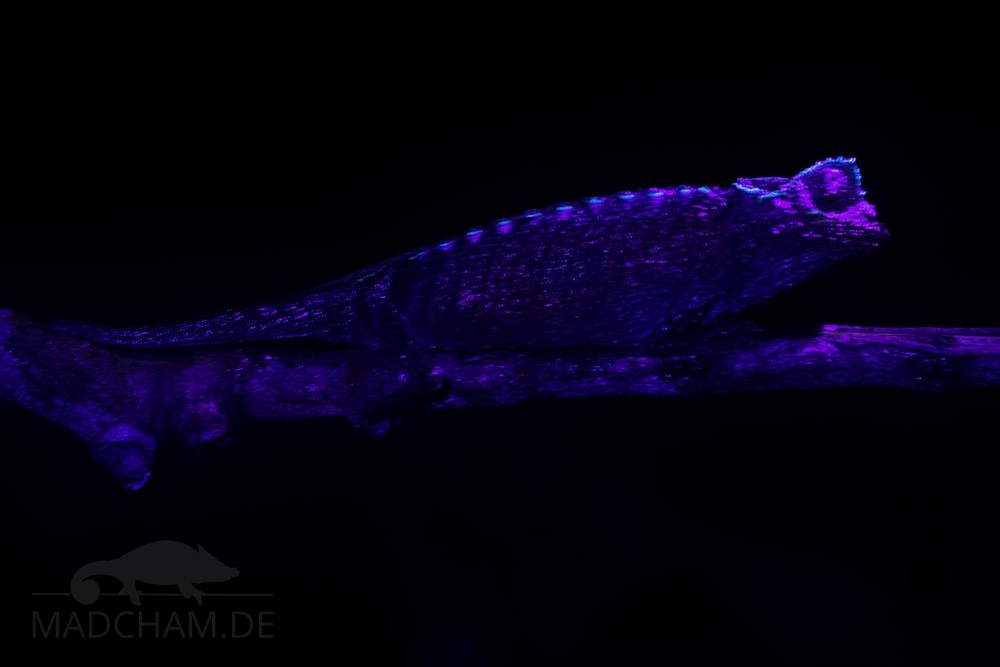The first thing most people think of when they think of a chameleon is the fact that these animals can change their skin color. This article explores the question of how this color change works and what it is actually good for.
How does the chameleon color change work?
The so-called chromatophores, specialized optical skin cells, are responsible for the color change. They lie under the outermost skin layer (epidermis) in layers on top of each other in the dermis. Melanophores are responsible for dark blue and black colors, xanthophores for yellow and orange pigments, erythrophores for red pigments and guanophores for silvery shining pigments. In chameleons, however, there are also cells that do not require any pigments to give the skin a different color. They carry out the color change by means of reflection.
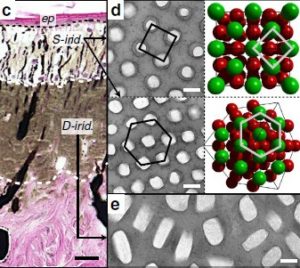
Guanine crystals in the S-iridophores layer (S-irid. and d) and in the D-iridophores layer (D-irid. and e) under the epidermis (ep), shown left in the tissue section and right under the transmission electron microscope. At d you can see how close the guanine crystals are arranged in two different skin colors. Graphic from the publication “Photonic crystals cause active color change in chameleons” by Teyssier et al. 2014, licensed under Creative Commons BY 4.0.
There is a superficial layer of S-iridophores and a deep layer of D-iridophores. The iridophores contain guanine crystals, which are the key to color change in chameleons.
In the upper S-iridophores layer, the guanine crystals lie close together and are arranged in a triangular pattern. The guanine crystals can change their distance to each other. They function like a photonic crystal, which can influence the movement of photons (light particles) and thus change the color reflection of the light falling on the skin. The S-iridophores are responsible for the fact that chameleon skin can change from green to yellow or orange.
In the lower D-iridophores layer of the chameleon skin, the guanine crystals are shaped like small bricks and lie rather disordered next to each other. This layer provides reflection in an area close to the infrared, which leads to lower absorption of sunlight. It serves as natural heat protection for the chameleon.
In red chameleons, a large proportion of the iridophores in the skin are replaced by erythrophores. Red chameleon skin cannot change to other colors but can vary between dark and bright red. Blue chameleon skin, on the other hand, can become not only lighter but even white.
The upper S-iridophores layer is only fully present in adult chameleons, which explains why young animals do not yet produce all the coloration of their older fellows. They only have the D-iridophores layer in their skin and still have to fully develop the S-iridophores.
The structure of the chameleon skin in iridophores and the function of guanine crystals was not described until 2014. Previously it was thought that the color change was exclusively caused by the different spread of color pigments. In fact, dispersion and aggregation of pigments are responsible for lighter and darker colors. However, this idea could not satisfactorily explain why chameleons can change their colors from green to yellow within a few seconds. The guanine crystals can do this – they produce so-called structural colors that are not caused by pigments – which only a few years ago unraveled another body function in chameleons. How exactly chameleons can control the guanine crystal networks in their skin has not yet been clarified. What we already know: Every color change happens completely unconsciously. So the chameleon cannot arbitrarily create patterns in its skin.
When does a chameleon change color?
In the past, it was thought that the chameleon’s color change served to better camouflage the animal. Today we know that this is not the case: the chameleon uses its color change of the skin primarily for communication. For example, females ready to mate usually show a completely different coloration than pregnant chameleons in order to signal to potential partners “With me you have no more chance”. Males who want to impress other males or threaten someone are extremely colorful and bright. A threatened or inferior chameleon usually shows a very dark to black coloration.
The color is also used very practically: Chameleons also turn darker in order to capture more sun rays and thus more heat at cooler times of the day. In their sleep, on the other hand, they cool down and become very bright. Sick animals are often also pale in color, but animals in hibernation also usually show less bright colors.
Can chameleons adapt to the color of their background?
Each chameleon species has only a very specific color spectrum. Chameleons cannot change color depending on their background – this is a myth that is still circulated and diligently shared in the social media but is simply wrong. Chameleons can only vary their colors within the species and gender-specific color spectrum. Leaf chameleons have only a very small color spectrum from black to brown to loamy shades, adapted to their habitat just above the ground. Here the color is not only used for communication, but also for camouflage. Other species have very wide color scales from bright red to blue, green, yellow to white like the panther chameleons that live in trees and bushes.
Fluorescence under UV light
Chameleons have bone processes and combs, especially in the head and spine areas, which are almost exclusively covered by thin scales. In these areas, the skin is particularly thin in contrast to the skin on the rest of the body; they form real “windows”. Bones have long been known to fluoresce under UV light. If a UV lamp (“black light”) is held over a chameleon, the fluorescent bones shimmer through in areas of very thin skin. It is assumed that the bizarre patterns, which occur mainly on the head under UV light, serve as color changes for intraspecific communication. Chameleons can probably see in the ultraviolet range and thus perceive patterns that are invisible to the human eye. This would not only make it possible for chameleons to distinguish between different species over long distances, but females could also recognize at a distance which chameleons are particularly suitable as potential partners.

